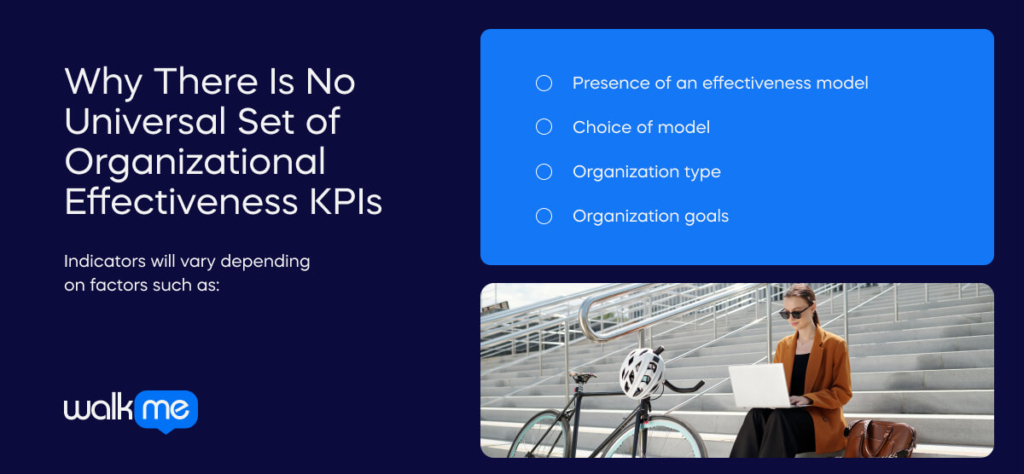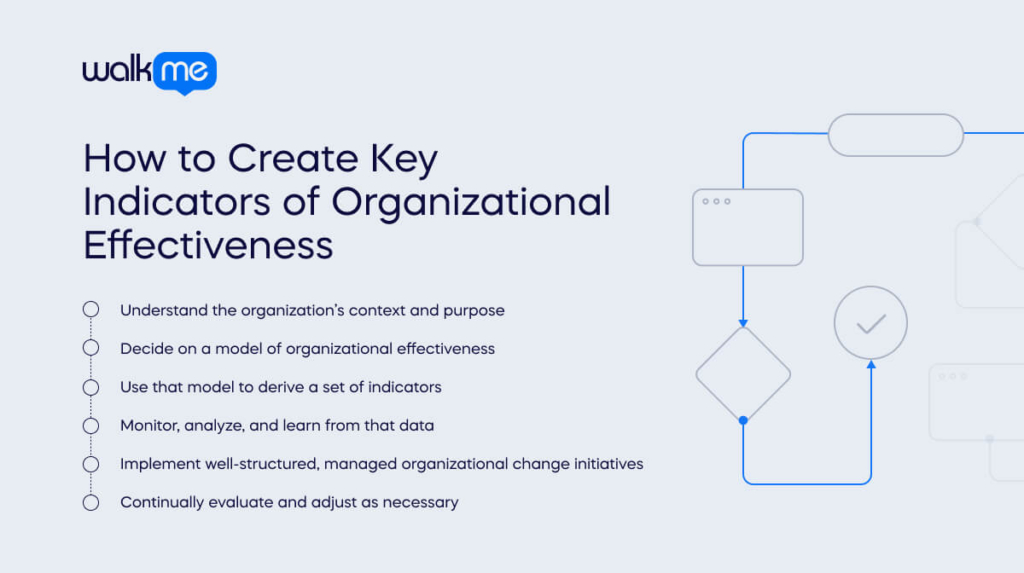What are the key indicators of organizational effectiveness?
In this article, we’ll learn why organizations need to create their own indicators … but before we do, it is critical to understand how organizational effectiveness is modeled.
After all, your organization’s model will determine which indicators it should use.
How to Measure Organizational Effectiveness
There are many models of organizational effectiveness, each of which follows a different underlying principle.
For instance:
- Goal-based models define an organization’s effectiveness based on how efficiently and how well it achieves its goals.
- System-based models define organizations as a system or a social system, and the efficiency of that system determines how effective the organization is
- Constituency models base effectiveness on how well the organization meets the criteria set forth by its constituents
Today, most organizations rely on models that are goal-based.
That is, they rate an organization’s effectiveness based on how well it achieves its aims.
However, not all organizations take the same approach or use the same model.
If your organization uses a certain model, then your indicators should be derived from that model.
Using a set of indicators that doesn’t match up with the organization’s pre-existing model will, of course, only produce bad results.
If your organization doesn’t have a model yet, then one should be chosen before beginning.
Why There Is No Universal Set of Organizational Effectiveness KPIs

Key performance indicators (KPIs) are frequently used in business to help track and analyze performance across many business functions and processes.
The same approach can provide insight when assessing organizational health and effectiveness.
In fact, without indicators, accurately assessing organizational effectiveness is next to impossible.
Of course, just as there is no universally accepted model of effectiveness, there is no universal set of indicators.
Indicators will vary depending on factors such as:
- Whether or not the organization has a model of effectiveness
- Which model the organization is using or chooses to use
- The type of organization
- The organization’s goals
A business, therefore, must create its own indicators.
Though finding the right indicators is not always easy, organizational effectiveness models offer a good starting point.
When discussing the assessment of non-profit organizations and government organizations, Charles Lusthaus recommends creating indicator starting points, such as:
- Achievement of goals
- Number of clients served
- Quality of services / products
- Services access and usage
- Knowledge generation and utilization
- Quality of life changes
- Demand for services or products
- Replication of the organization’s programs by stakeholders
- Growth indicators for coverage of programs, services, clients, and funding
Of course, these starting points are just that – starting points.
Because every organization is unique, each organization should develop its own key indicators.
How to Create Key Indicators of Organizational Effectiveness

It is clear that there is no universal model of effectiveness that applies to any organization in any context.
Nor is there a universal set of indicators.
Instead, organizations need to analyze their own aims, decide how they will model effectiveness, and create a set of indicators based on that model.
Here is a series of steps that can be used as starting points for developing a set of indicators:
- Understand the organization’s context and purpose. For-profit companies and not-for-profit organizations differ in their context and their aims. And even within the private and public sectors, each company will have its own function and direction. Clearly defining that aim is crucial to understanding how effective an organization is at achieving its goals.
- Decide on a model of organizational effectiveness. Today, many companies use goal-based models of organizational effectiveness. However, there are others – it is worth reviewing those models when deciding which model to use.
- Use that model to derive a set of indicators. The organization’s purpose and the model of organizational effectiveness will help determine which indicators to use. Goals, for instance, can serve as starting points for indicators related to those goals, such as costs, timelines, process efficiency, success rates, and so forth.
- Monitor, analyze, and learn from that data. Over time, the indicators can offer a picture of how well the organization achieves its objectives (or meets the criteria set forth by its model of effectiveness). This data, in turn, can provide a direction for future process improvements.
- Implement well-structured, managed organizational change initiatives. The only way to improve is through organizational change. However, organizational change is a challenge in and of itself, which means that effective change management is a must. Sophisticated, well-structured change programs can reduce failure rates, minimize the negative impacts to business processes, improve employee productivity, and more.
- Continually evaluate and adjust as necessary. Once changes are complete, monitor the results. If necessary, implement further changes or test new ones. In fact, it is best to think of change as a continual process, rather than discrete projects – especially in today’s fast-paced business world.
Ultimately, like any other business process, improvement projects require experimentation and adaptation.
Those in charge of organizational improvement projects shouldn’t be afraid to adjust their key indicators or their approach to change management.
After all, the effectiveness of organizational improvement projects themselves can also be analyzed and improved over time.

